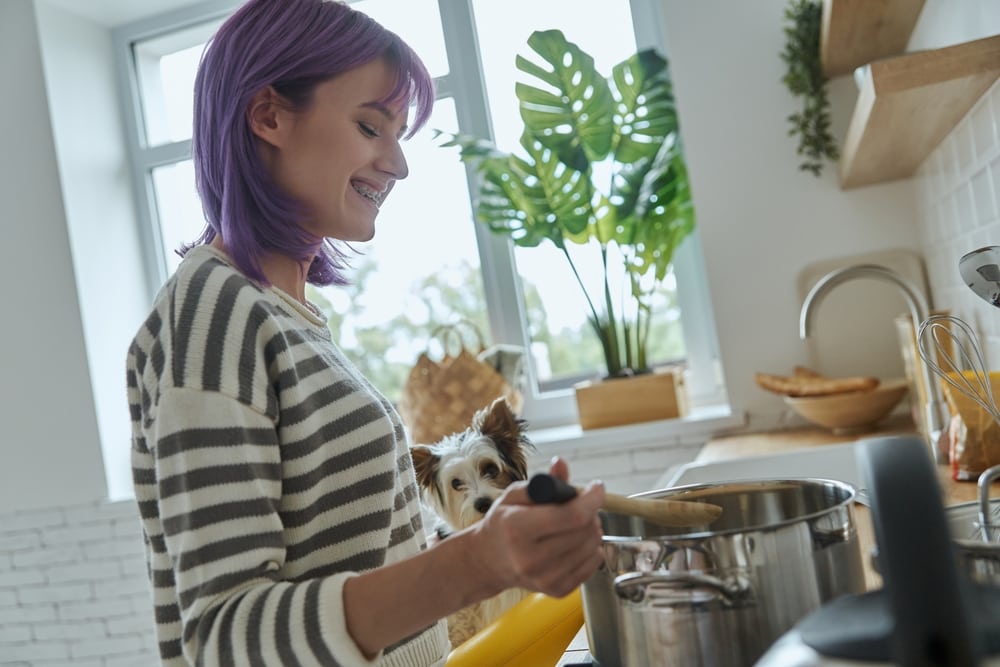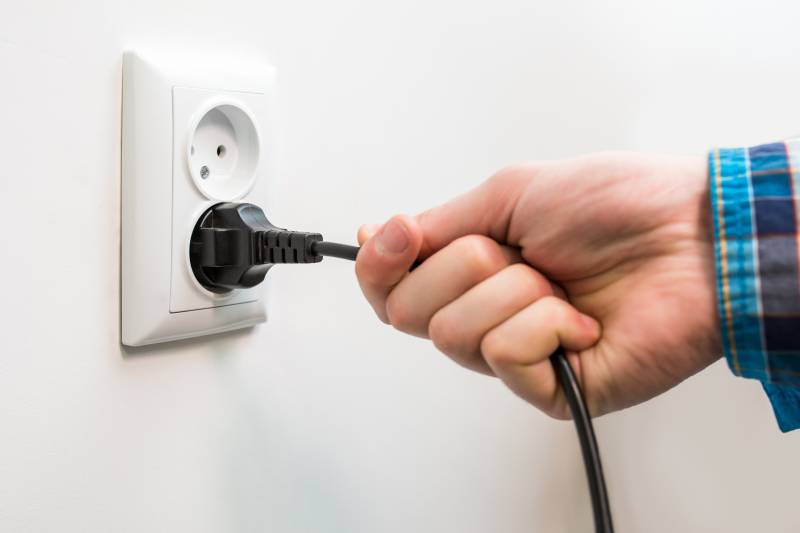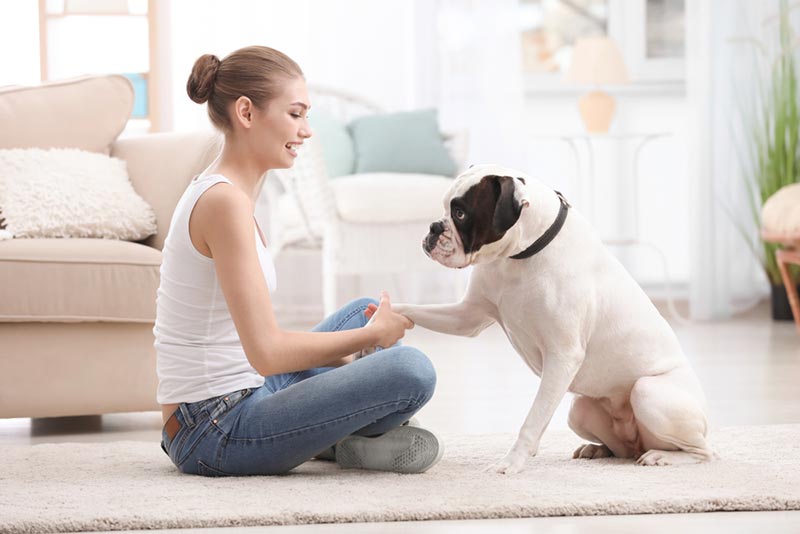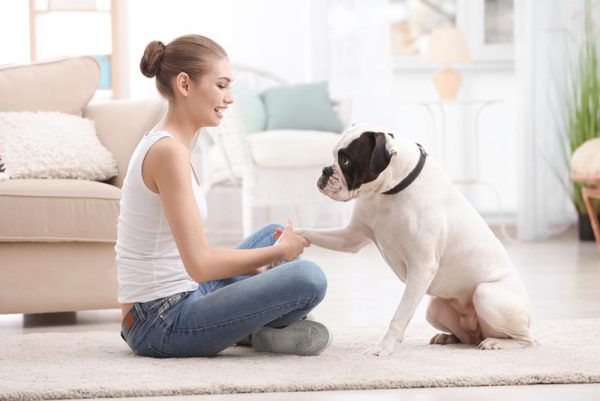You share a home with your dog, so it’s important to create a safe space for them to live and play, especially if you’re new to dog ownership. One of the first steps in cultivating a pet-friendly environment is to check to make sure your house doesn’t have tantalizing things your dog might destroy within reach, such as open food on the counter or unattended laptop cords plugged into the wall. At the same time, we know you don’t want to give up decorating the table or enjoying chocolate.
Here are a few tips to create a safe environment for your dog that doesn’t wreck your lifestyle.

The 12 Ways to Make Your Home Dog-Friendly
1. Secure the Food
Many clever canines can easily devise methods of stealing food that’s resting on the countertop or languishing on the table. Make sure chairs and bar stools are pushed under the table if no one is sitting there, and don’t leave food on the counter for them to be able to reach and devour when you’re not looking. You may even need to go as far as child locks on the fridge for some advanced-level food thieves!

2. Lock Away the Medicines and Cleaning Supplies
The most toxic substances in your house come from the pharmacy, the auto shop, and the cleaning aisle. Always keep all medicine and household cleaners out of your pet’s reach. You might even consider putting a child’s lock on the cabinet where they’re stored as an extra precaution. Also, never store any liquid car supplies indoors, or anywhere your dog can reach. Most car cleaners and supplies, such as tire shine, motor oil, and windshield wiper fluid, are toxic to dogs. Antifreeze is particularly dangerous and a small amount can kill them.
3. Use Essential Oils With Caution
Since they’re natural, you may think essential oils are safe to use around your pet. However, some can be quite toxic, especially in pure form. Always discuss the benefits and risks with your vet first before applying any essential oils to your dog’s skin. Essential oils are most concentrated (and toxic) through direct application or ingestion. Diffusing might not be a good idea either.

4. Create a Quiet Space
Dogs need a place that they can retreat to when things get a bit overwhelming for them. It doubles as a space they can be placed when they need to be kept out of the way, for example if you have visitors who are allergic to, or afraid of dogs. A cozy spot under the stairs, a snuggle zone on the landing or a dog crate in a quiet part of the house are all good ideas. This should be a space that your dog knows they will not be bothered in when they go there.
5. Tuck Away Cords and Strings
Laptop cords, strings from the blinds, even a pair of shoelaces can become a choking hazard if your dog can reach them. Keep strings out of reach, and unplug electrical cords when you’re finished using them, or when you leave them unattended, to prevent the risk of electrical shock.

6. Watch Out for Corded Space Heaters
Most space heaters now have a built-in safety setting where they’ll shut off automatically if they’re tipped over. However, if you have an older model, you’ll need to be extra careful that your dog doesn’t knock it over. Regardless of whether you have an old or new unit, your dog shouldn’t venture too close to the heater, or they could burn themselves. And, of course, don’t let them chew on the cord, either.
7. Keep the Toys Tidy
If you’re lucky enough to have little children, you already know it’s a battle to straighten up their scattered toys all the time. Consider creating a separate play area for your child to engage with their tiny toys where your nosy dog can’t swallow them or remove your dog from the room during playtime. When playtime is over, try to clean up the toys and put the particularly hazardous ones (like tiny plastic figurines) in a basket where your pup can’t reach.

8. Never Leave Burning Objects Unattended
Lighted candles or a fire in the hearth can be dangerous if your dog becomes too curious. While it isn’t likely that your dog will intentionally jump into the fire, you’ll need to make sure there’s no way they could have an accident. If they’re young puppies, you do need to monitor them next to an open flame to make sure they don’t get too close. Similarly, only place candles on secure high surfaces that they can’t tip over. Safety gates for putting across a fireplace are ideal.
9. Have Yourself a (Dog-Friendly) Merry Little Christmas
It may be the most wonderful time of year, but it’s the most dangerous season indoors for a dog. Sparkly tinsel, breakable ornaments, sugar plums, and hot chocolate are all huge no-nos for Fido. Consider dog-friendly alternative decorations and safety measures to make December enjoyable for everyone. For example, if you must use glass Christmas ornaments, place them on the higher branches of the tree or secure a toddler gate around the Christmas tree’s base to keep your dog away.
Otherwise, consider swapping the glass balls for plastic or wooden ones that your dog won’t shatter if they knock them. Limit the use of ribbons and bows on unattended wrapped gifts, especially if you have a puppy. And definitely keep your dog out of the kitchen while baking cookies if they’re notorious for scaling bar stools.

10. Close the Toilet Seat
Drinking from the toilet bowl isn’t only a disgusting habit, but it can also be dangerous because of viruses and bacteria from fecal matter and chemicals from toilet cleaner. Keep the lid closed when not in use or shut the bathroom door on your way out.
11. Lock the Trash Can Lid
If your dog likes to plunder the garbage, you might save a trip to the vet by investing in a trash can with a locking lid. Otherwise, corral your dog out of the kitchen as you leave.

12. Research Indoor Plants Before You Bring Them Home
Lilies, chrysanthemums, tulips, and English ivy are just a few common houseplants that look nice in the grocery store but are toxic to dogs. Check the extensive poison plants list provided by the ASPCA to be sure you’re not harboring anything that could harm your pet.

Conclusion
If dog ownership is new to you, congratulations! The years that you’ll spend with your newly adopted friend will likely be some of the best of your life. Implementing a dog-friendly lifestyle can seem daunting at first, but soon these things will become second nature to you as you become more aware of possible dangers. Even if you’re a dog veteran, it’s still a good idea to familiarize yourself with common hazardous materials because new items appear on the market over time, and many household items that we use every day can become our dog’s worst nightmare.
Learning the art of how to create a dog-friendly home can potentially save their life—and make yours a little less stressful, too.
See Also:
- Kangal vs Great Dane: Which Should You Choose?
- Silver Lab vs. Weimaraner: Differences Explained (With Pictures)
Featured Image Credit: Africa Studio, Shutterstock
Contents
- The 12 Ways to Make Your Home Dog-Friendly
- 1. Secure the Food
- 2. Lock Away the Medicines and Cleaning Supplies
- 3. Use Essential Oils With Caution
- 4. Create a Quiet Space
- 5. Tuck Away Cords and Strings
- 6. Watch Out for Corded Space Heaters
- 7. Keep the Toys Tidy
- 8. Never Leave Burning Objects Unattended
- 9. Have Yourself a (Dog-Friendly) Merry Little Christmas
- 10. Close the Toilet Seat
- 11. Lock the Trash Can Lid
- 12. Research Indoor Plants Before You Bring Them Home
- Conclusion









